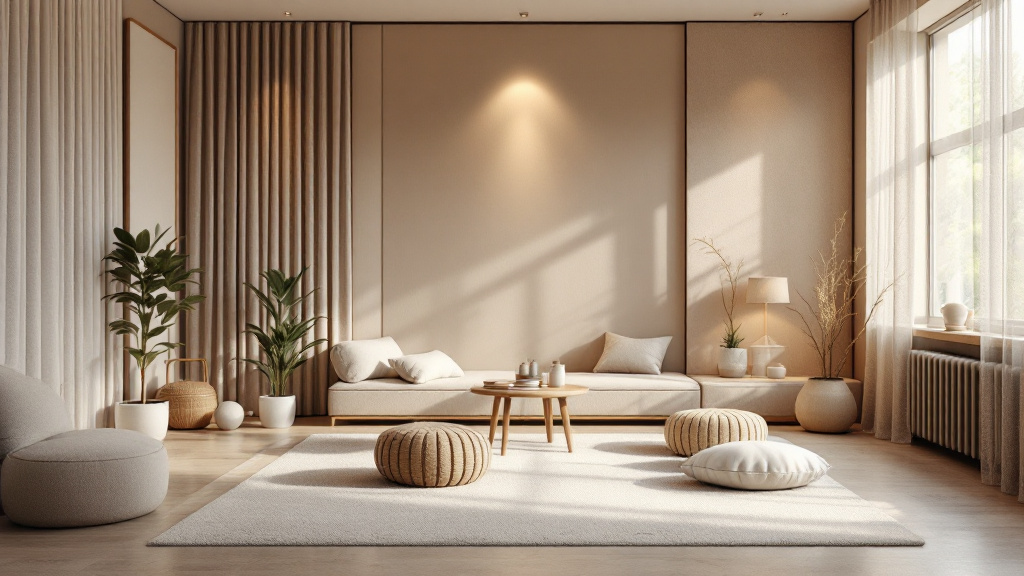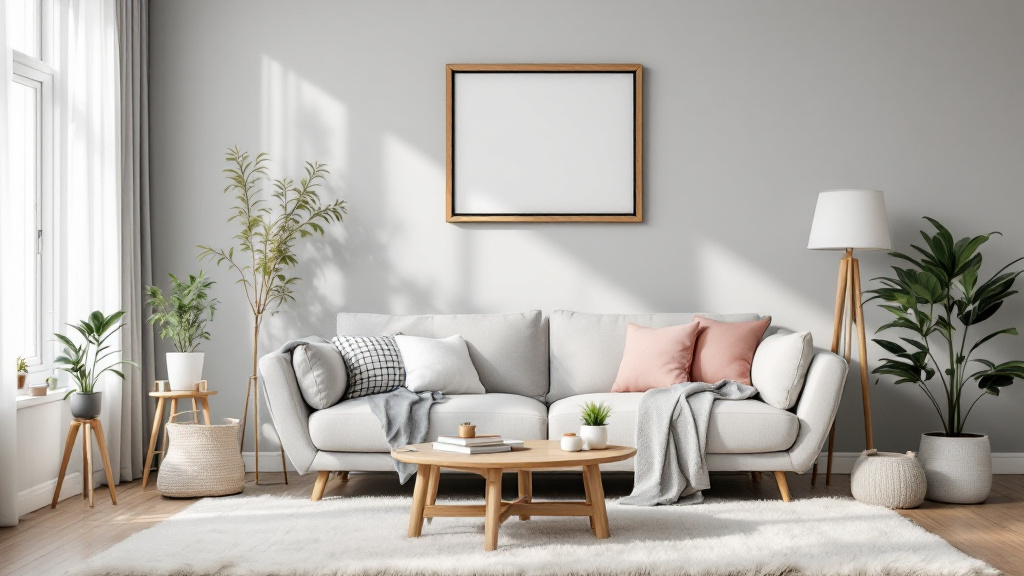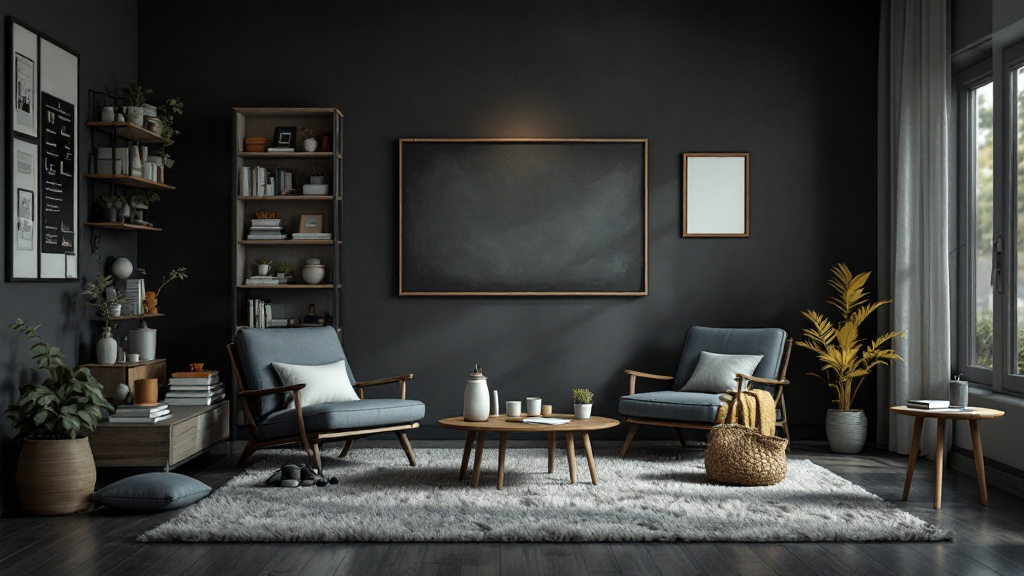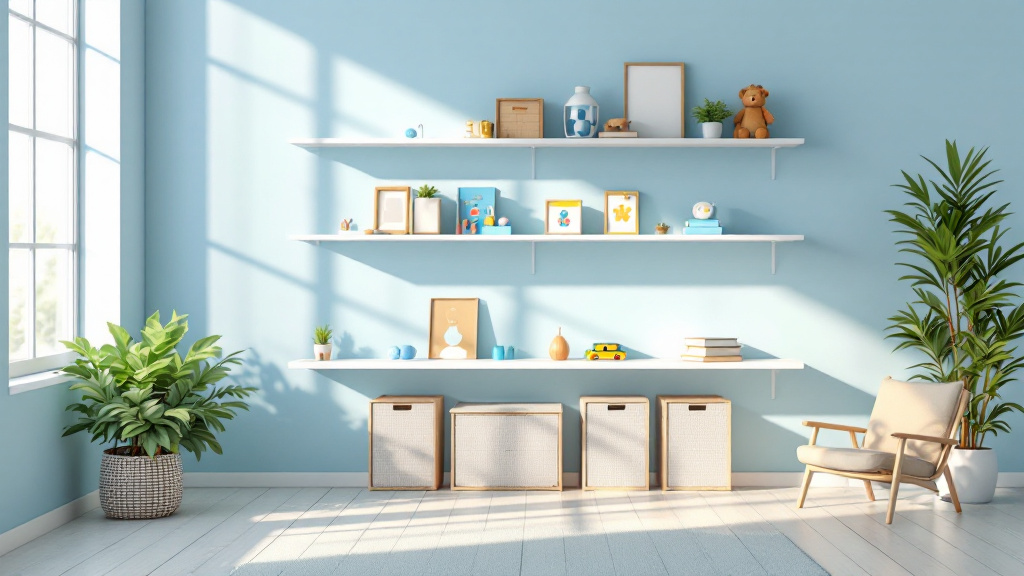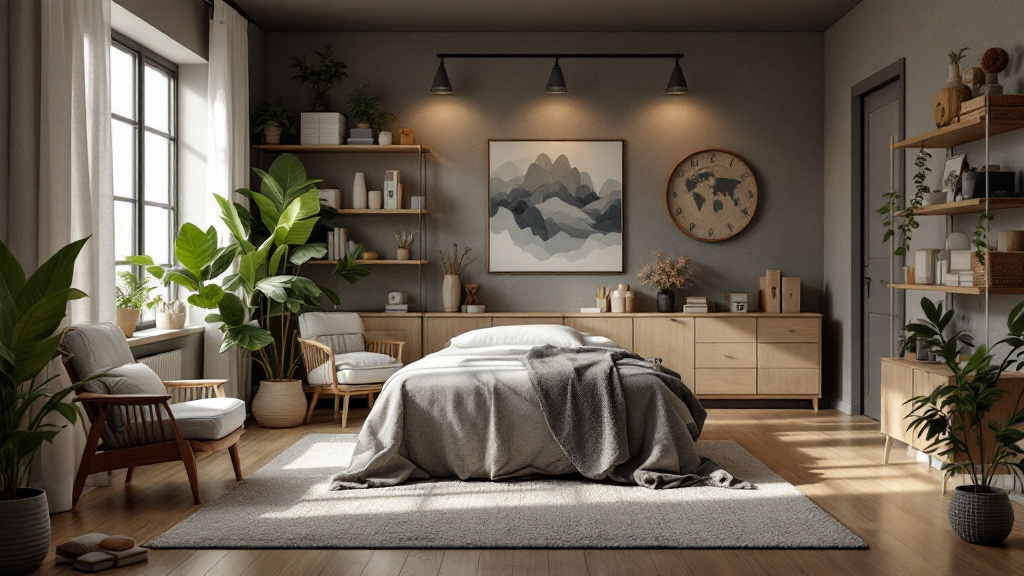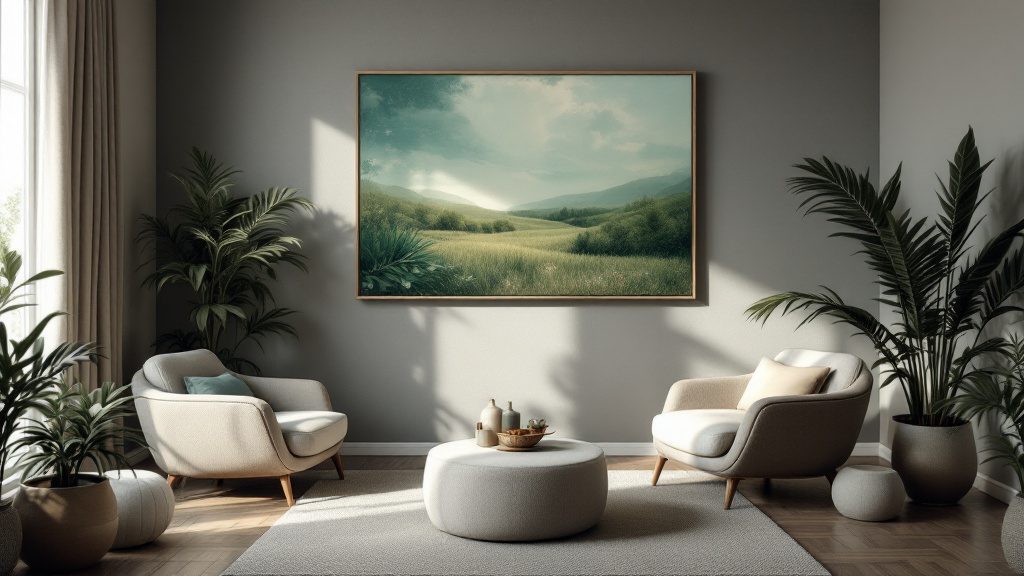Understanding the Importance of Sensory Spaces
Sensory spaces offer individuals with autism a sanctuary where they can explore, regulate, and manage their sensory experiences. Given the varying sensory needs of autistic individuals, these spaces must be carefully designed to support their unique challenges. By acknowledging the role of sensory environments in emotional and cognitive regulation, we can create spaces that not only meet immediate sensory needs but also foster holistic development.
The Purpose and Benefits of Sensory Rooms
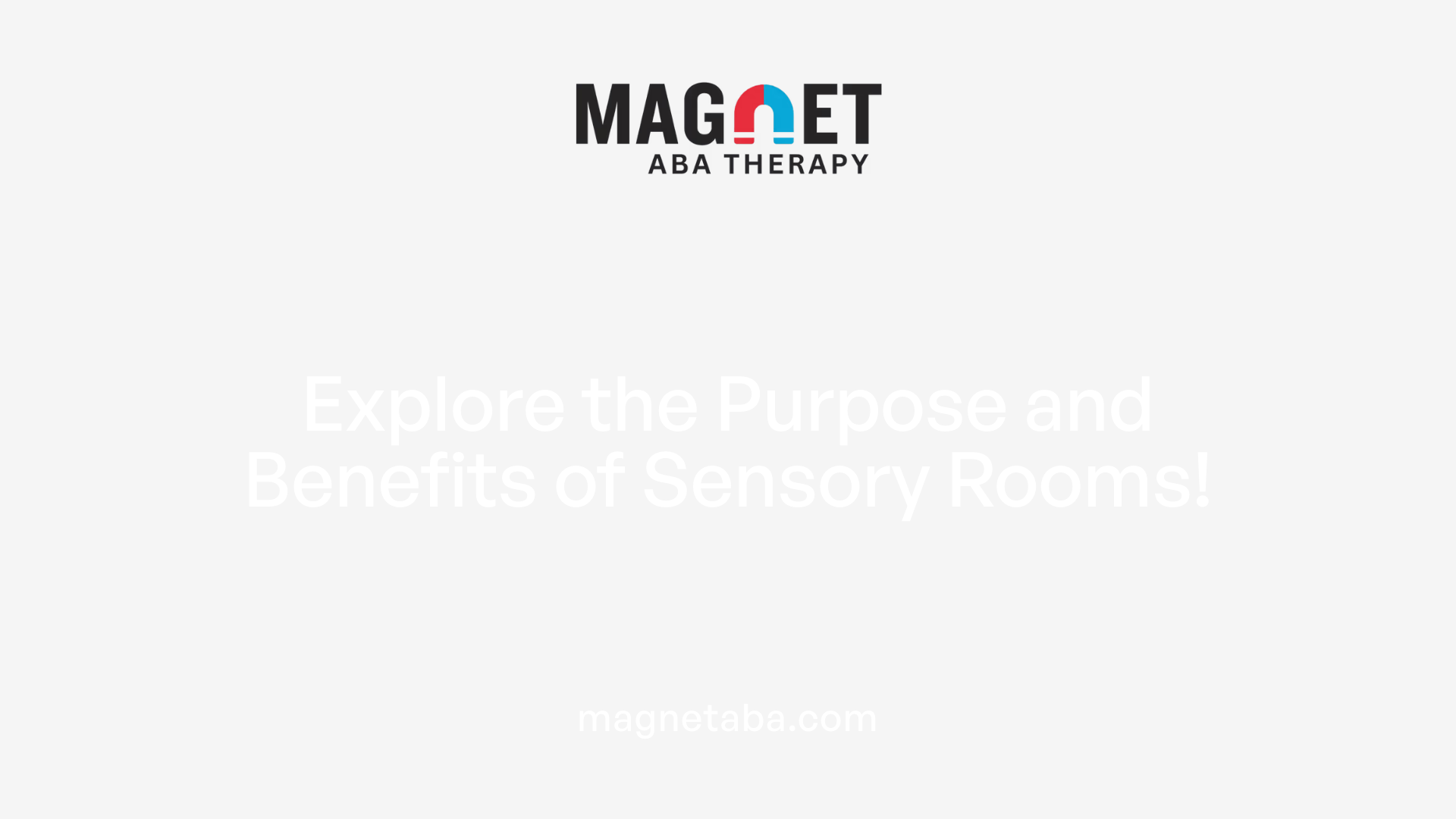
Purpose of Sensory Rooms
Sensory rooms are designed to create controlled and nurturing environments tailored to individuals with sensory processing challenges, particularly those on the autism spectrum. These spaces help users explore various sensory stimuli in a safe setting, promoting self-regulation and emotional grounding. By offering a retreat from overstimulating situations, sensory rooms enable individuals to decompress, enhancing overall well-being and comfort.
Benefits for Autistic Individuals
Sensory rooms provide numerous advantages for individuals with autism. They can help reduce stress and anxiety, facilitate better focus, and improve social interaction skills. Moreover, the calming effect of sensory rooms enables users to regain control over their sensations, leading to enhanced learning outcomes. Common elements found in these rooms include:
- Weighted Blankets: Provide deep pressure that aids in relaxation and improves sleep
- Tactile Toys: Engage touch through fidget spinners and sand, helping self-soothe and concentrate
- Mood Lighting: Adjustable lighting can create a soothing visual environment
- Soothing Sounds: Incorporating gentle music or white noise enhances focus and reduces anxiety
Research on Sensory Room Efficacy
Research has consistently shown the effectiveness of sensory rooms in reducing challenging behaviors in autistic children. Studies indicate that controlled sensory environments can decrease stress levels and improve attention by allowing individuals to interact with their surroundings at their own pace. Notably, children who were given control over sensory stimuli in multi-sensory environments exhibited increased focus and reduced stereotypical actions, suggesting that personalizing sensory input can significantly benefit their learning and behavioral outcomes.
In summary, sensory rooms are vital for managing sensory overload, promoting calmness, and fostering better emotional regulation for individuals with autism.
Tailoring Sensory Environments to Individual Needs
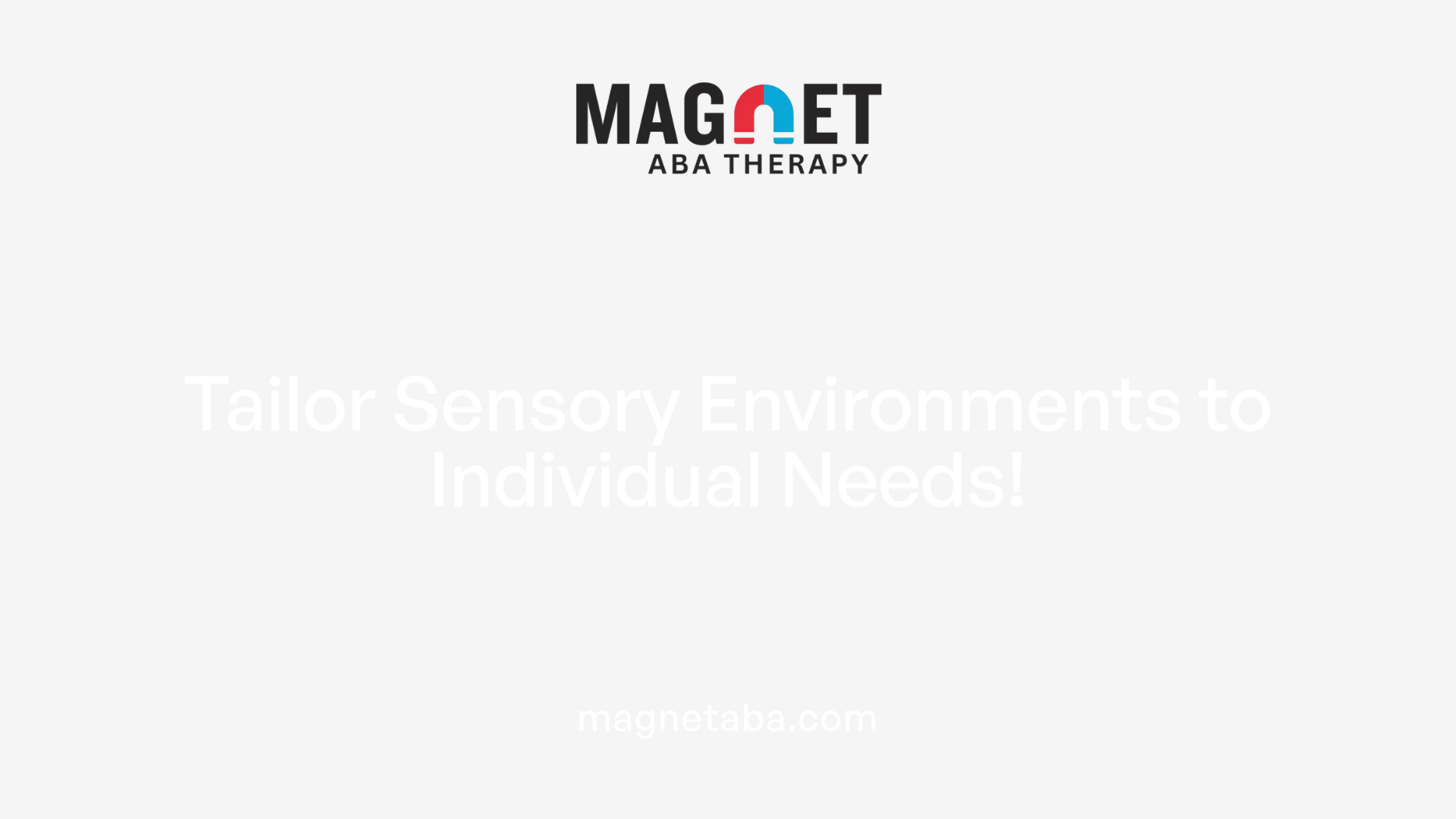
Individual Sensory Needs
Creating a sensory environment for children, especially those on the autism spectrum, necessitates a comprehensive understanding of their unique sensory needs. Observing and noting specific sensitivities—such as reactions to harsh lighting, loud noises, or certain textures—can provide invaluable insights. Each child is different; while one may find solace in soft fabrics, another may thrive on tactile exploration through textured toys.
Personalized Sensory Inputs
Designing sensory spaces requires incorporating personalized sensory inputs to maximize comfort and minimize anxiety. This can include setting up various zones within a sensory room, each tailored for different activities. For example, a quiet reading corner with cushioned seating and gentle lighting can cater to children needing calm, while a tactile zone filled with various fabrics and sensory toys can engage those who seek more hands-on stimulation. Integrating features such as bubble tubes for visual relaxation or weighted blankets for proprioceptive feedback can further enhance the tailored experience.
Involving Autistic Individuals in Design
Involving children with autism in the design process is crucial to ensure their sensory space meets their personal preferences. Allowing them to choose colors and textures or select toys empowers them and provides a sense of ownership over their environment. Collaborative input helps to create a more meaningful and effective sensory experience, enhancing the potential for comfort and emotional regulation.
By thoughtfully addressing these aspects, caregivers and educators can create sensory-friendly environments that not only aid in managing sensory overload but also support overall development and well-being.
Essential Equipment for Sensory Rooms
What equipment is essential for an autism sensory room?
Essential equipment for an autism sensory room includes a variety of sensory stimulation tools tailored to meet individual needs. These tools are designed to create a calming and engaging environment while addressing sensory sensitivities that individuals on the autism spectrum may experience.
Common Sensory Room Equipment
- Bubble Tubes: These provide visual stimulation with moving bubbles, captivating attention and creating a serene atmosphere.
- Hurricane Tubes: Similar to bubble tubes, these feature swirling lights and colors that can mesmerize and soothe.
- Fiber Optic Curtains: These offer a mesmerizing display of light while also being soothing to touch, adding tactile engagement.
- Sensory Projectors: They project calming images or colors onto walls, creating a relaxing ambiance that can be adjusted to individual preferences.
Visual and Tactile Tools
- Weighted Blankets: Help provide deep pressure that can calm individuals, enhancing their feelings of safety and comfort.
- Tactile Mats: These mats come with different textures that can engage touch and improve focus.
- Vibrating Massagers: These promote relaxation and sensory engagement through gentle vibrations.
Auditory and Proprioceptive Aids
- White Noise Machines: Useful for creating a consistent background sound that can mask overwhelming noises, aiding concentration and relaxation.
- Noise-Canceling Headphones: Essential for those highly sensitive to sound, allowing them to control their auditory environment.
- Proprioceptive Tools: Items like therapy balls and swings help develop body awareness and balance, providing soothing motions that can increase comfort.
These elements work together to create a versatile and calming environment that supports the developmental and sensory needs of individuals with autism.
Sensory Design in Educational Settings
Creating a sensory-friendly environment for autism
To cultivate a sensory-friendly environment for individuals with autism, it’s vital to design spaces that prioritize safety and comfort. This can include dedicated calming rooms or sensory corners where students can retreat to manage overwhelming stimuli.
- Organized environments: Having visual schedules and clear, consistent routines significantly aids in alleviating anxiety by establishing predictable expectations in the school day.
- Distraction reduction: Implementing strategies like noise-canceling headphones and soft, adjustable lighting can help create a less stimulating atmosphere. Bright, harsh lights often exacerbate sensory overload, making subdued lighting preferable.
- Transitional support: Communicating upcoming transitions with countdown timers and verbal reminders can help students prepare mentally and emotionally, facilitating smoother shifts during the day.
- Emotional validation: Recognizing and celebrating individual strengths and providing emotional support fosters a positive atmosphere conducive to learning.
Benefits for students with autism
Sensory-friendly designs in schools deliver numerous advantages that significantly improve educational experiences for students with autism:
- Enhanced self-regulation: Access to sensory spaces enables students to manage their emotions and reduce anxiety levels effectively.
- Improved focus: Calming environments have been shown to increase attention spans, allowing students to concentrate better on their tasks.
- Social interaction support: Sensory spaces can foster social skills by facilitating collaborative activities among peers, reducing feelings of isolation.
- Motor skills development: Engaging in various sensory activities can promote physical coordination and overall development.
Integration in school curricula
Incorporating sensory design principles into school curricula enhances the educational framework through:
- Personalized learning experiences: Tailoring lessons to include sensory breaks and varied sensory engagement opportunities ensures attention to diverse needs.
- Interdisciplinary approaches: Combining sensory activities with educational content encourages comprehensive learning while catering to sensory preferences.
- Professional development: Training staff on sensory needs and strategies equips them to create effective, supportive environments for all learners, particularly those with sensory processing challenges.
Calming Ideas for Autism Sensory Rooms
What are calming sensory room ideas for autism?
Creating a calming sensory room for children with autism involves thoughtful design choices that prioritize comfort and tranquility. Here are several essential ideas:
- Weighted Blankets and Tactile Pillows
Incorporate weighted blankets to provide deep pressure, helping children feel secure and relaxed. Tactile pillows with diverse textures cater to those who find comfort in different surfaces, promoting sensory exploration. - Mood Lighting
Use soothing lighting options such as bubble lamps or fiber-optic lights. These not only create a calming visual environment but also alleviate anxiety associated with harsh classroom lighting, fostering a serene atmosphere. - Organized Storage Solutions
Labelled and accessible storage bins can significantly reduce clutter and distraction in the sensory room. An organized space helps minimize sensory overload, making it easier for children to engage with the calming elements provided. - Soothing Sound Fixtures
Integrating soothing sounds is essential to the sensory experience. Implement white noise machines or gentle music to enhance relaxation and help children focus better during activities in the sensory room. - Sensory Swings and Sensory Walls
Adding sensory swings can provide soothing motion, while sensory walls equipped with various textures give children the opportunity to engage with different tactile stimuli, promoting comfort and self-regulation.
Incorporating these elements ensures that a sensory room serves its purpose, offering a haven for children with autism to unwind, explore, and manage their sensory processing more effectively.
Design Considerations for Autism Sensory Rooms
How do you structure a sensory room specifically for the autism spectrum?
To effectively establish a sensory room for individuals on the autism spectrum, it is vital to strike a balance between calming and stimulating experiences. Designing the layout should prioritize different zones for various sensory inputs, allowing individuals to transition seamlessly between relaxation and exploration.
Room Layout and Structure
- Calming Zones: Incorporate cozy areas with soft lighting, such as bubble lamps and calming colors like soft greens or blues, to promote a peaceful environment.
- Interactive Zones: Include sensory walls that feature diverse textures or materials, interactive elements, and tactile tools to engage sensory seekers.
- Movement Areas: Create spaces that allow for physical activity, such as swings or bouncing boards, to cater to those needing vestibular input. This spatial division helps manage sensory overload and allows tailored exploration at each child's own pace.
Safety and Accessibility
Prioritizing safety is crucial when designing sensory spaces. Here’s how to ensure accessibility:
- Use soft flooring (like carpet or foam mats) to prevent injury during active play.
- Ensure secure, adjustable furniture that can adapt to different activities without moving.
- Create clear pathways around the room to reduce distractions and allow easy movement between zones, enabling children to navigate comfortably.
Personalized Sensory Inputs
Understanding individual sensory preferences greatly enhances the efficacy of a sensory room. Consider the following:
- Include weighted blankets and fidget tools for proprioceptive input.
- Use noise-canceling headphones or sound machines to manage auditory sensitivities. This helps inregulating sensory input and promoting focus.
- Tailor elements like color choices and textures based on the specific likes or aversions of the room's primary users, fostering a sense of ownership and comfort.
By implementing these considerations, a sensory room can become a pivotal resource for individuals with autism, enhancing their ability to self-regulate and manage sensory overload in a supportive and engaging environment.
Advancing Sensory Room Design for Adults
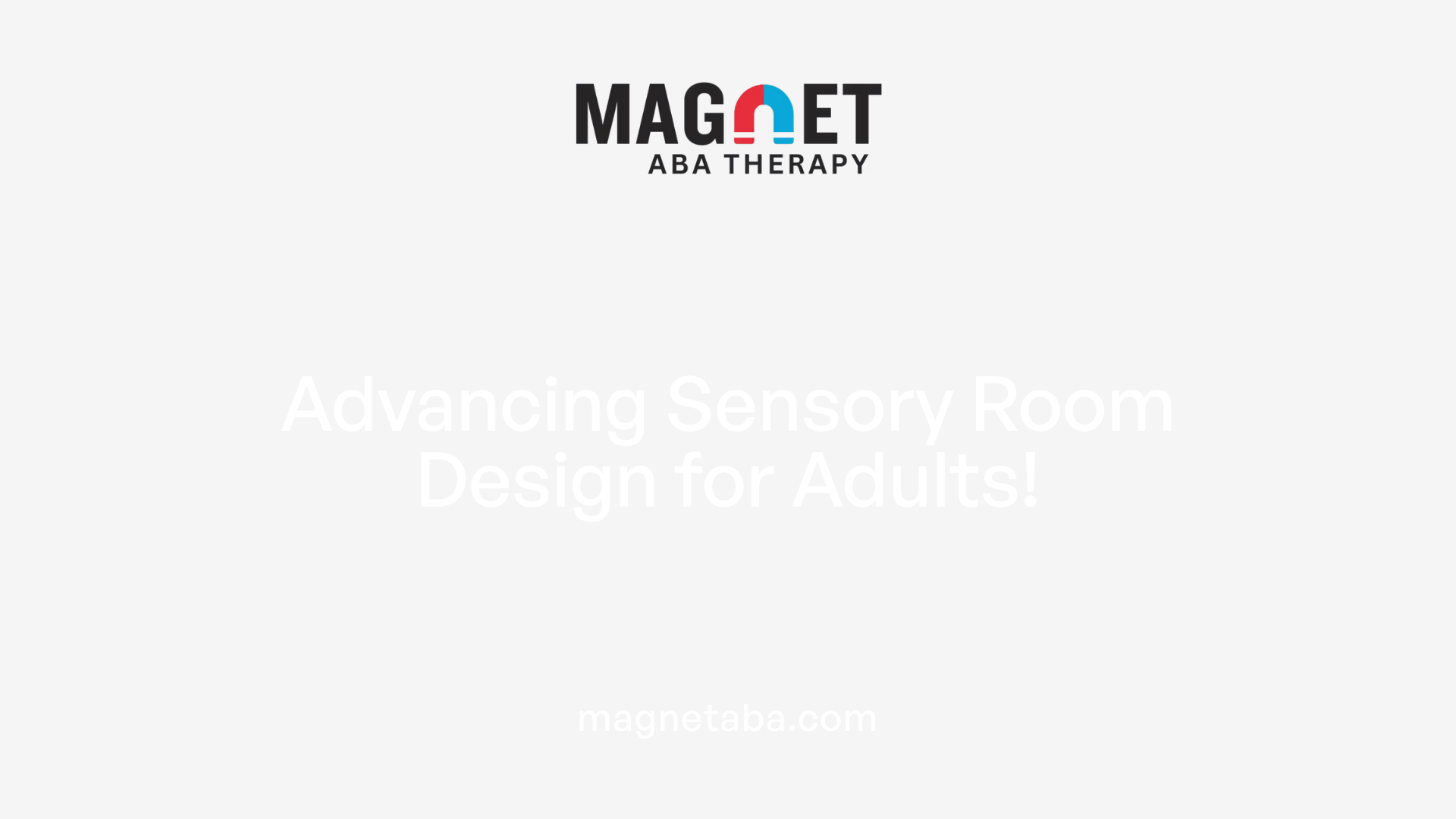
How can adults benefit from sensory rooms designed for autism?
Adults can greatly benefit from sensory rooms designed for autism, as these spaces offer a controlled environment to manage sensory overload. Sensory rooms promote emotional regulation and provide opportunities for sensory exploration, which is essential for adults seeking relief from stress and anxiety. By creating an inviting atmosphere with age-appropriate tools, sensory rooms can help adults with autism improve focus and overall well-being.
Age-appropriate sensory tools
In designing sensory rooms for adults, it’s crucial to include tools that cater specifically to their needs. Common age-appropriate sensory tools might consist of:
- Weighted blankets: Offering deep pressure to comfort and calm during moments of anxiety.
- Fidget toys: Encouraging tactile engagement and focus.
- Noise-canceling headphones: Reducing auditory distractions for increased calmness.
- Calming visual elements: Like soft lighting, bubble tubes, and sensory walls to create a soothing atmosphere.
- Aromatherapy diffusers: Utilizing calming scents, such as lavender or chamomile, to enhance relaxation.
Developing coping strategies
To maximize the effectiveness of sensory rooms, it is essential to integrate coping strategies. Regular use of these spaces allows adults to develop skills for managing sensory processing challenges. For instance:
- Structured sensory breaks: Setting aside specific times for sensory engagement can help reduce overwhelm.
- Mindfulness techniques: Incorporating breathing exercises during sensory activities enhances relaxation.
- Feedback and personalization: Involving individuals in tailoring their sensory experiences can lead to greater comfort and effectiveness.
Overall, well-designed sensory rooms with appropriate tools and coping strategies are vital for supporting adults with autism in navigating daily sensory challenges.
Innovative Tools and Technologies in Sensory Spaces
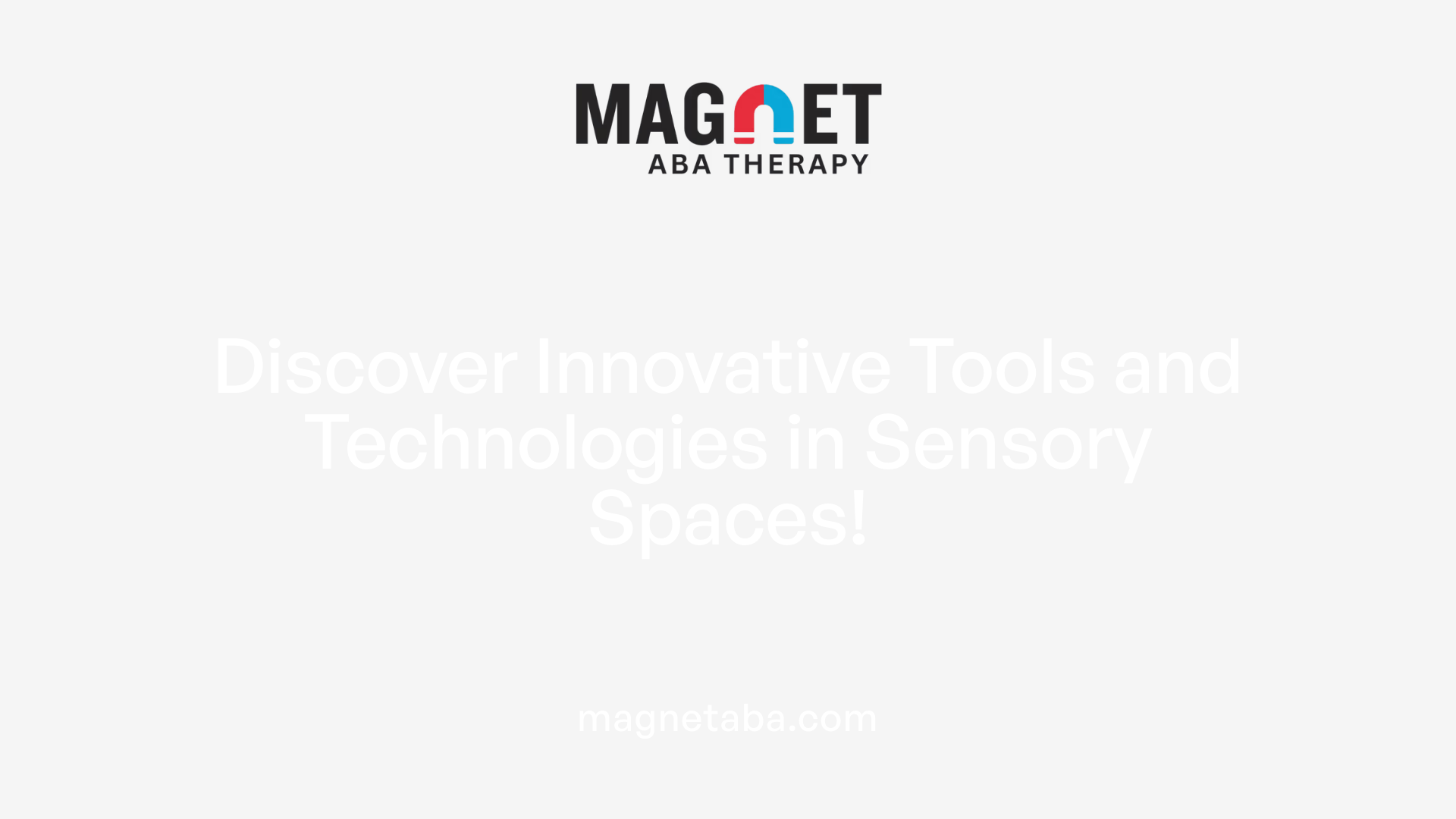
Interactive Features
Sensory rooms are increasingly incorporating interactive features to enhance engagement and sensory exploration. Tools like sensory wall panels allow individuals to touch and manipulate various textures, promoting tactile engagement and serving as calming distractions. Bubble tubes provide not only visual stimulation but also an interactive element where children can focus on the movement of bubbles, making the sensory experience dynamic and immersive.
Augmented Reality Technologies
Emerging technologies, including augmented reality (AR), are revolutionizing sensory room experiences. By integrating AR, sensory spaces can offer interactive visualizations that respond to a child's movements or actions, creating a tailored, engaging environment. This technology allows for imaginative play, enhancing the sensory experience while also supporting cognitive development and attention regulation.
Addressing Diverse Sensory Needs
Key to the design of sensory rooms is the ability to address the unique sensory needs of each individual. Using a combination of diverse equipment, such as weighted blankets, calming aromatherapy, and adjustable lighting, allows for adaptation based on a person's preferences. This approach ensures a personalized experience that fosters emotional regulation and inclusion, vital for children with autism and sensory processing difficulties.
Funding and Accessibility for Sensory Spaces
Cost-effective design solutions
Creating sensory spaces does not need to be prohibitively expensive. Many essential elements can be constructed using affordable materials. For instance, simple items like soft pillows, sensory bins filled with rice or sand, and fiber optic lights can provide effective sensory input. Additionally, reconfiguring existing spaces, such as repurposing closets or quiet corners, can help in designing a sensory-friendly area without significant remodeling costs.
Finding financial support
Various funding resources are available for creating sensory rooms. Programs like the National Disability Insurance Scheme (NDIS) in Australia offer financial assistance for individuals needing specialized environments. Local grants, fundraising through community initiatives, and collaborations with educational institutions or nonprofits also provide pathways to secure funding.
Making sensory spaces accessible to all
Ensuring sensory spaces are accessible is crucial. This involves designing environments with clear pathways, soft flooring to prevent injuries, and equipment that caters to a wide range of sensory preferences. Regular assessments and updates of the spaces can help maintain their effectiveness and usability, promoting inclusivity for individuals with different sensory needs.
Educational Impact of Sensory Spaces
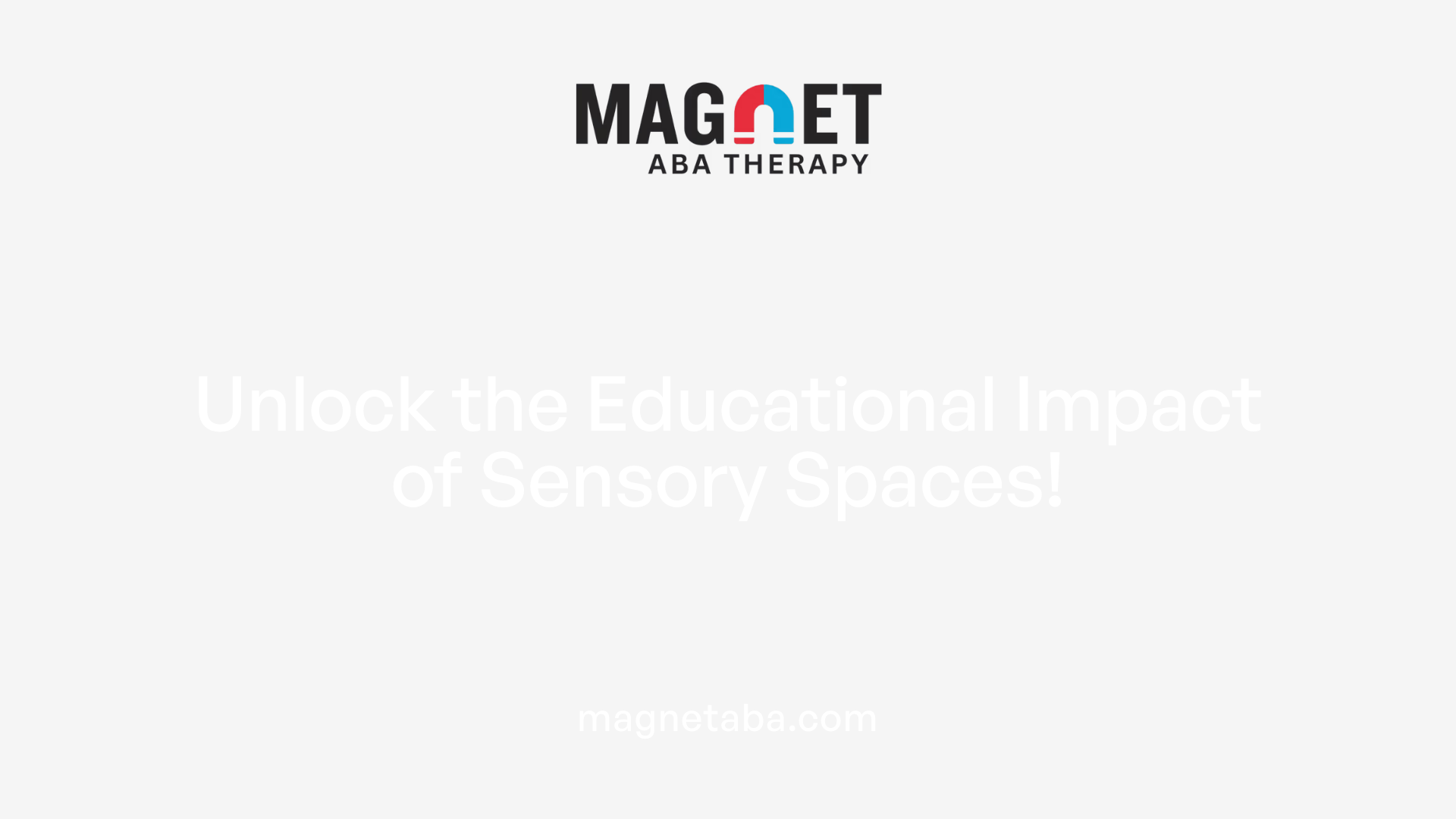
How do sensory spaces affect learning?
Sensory spaces significantly enhance the learning experience for students with autism and other sensory processing disorders. By providing a controlled environment, these spaces help students manage sensory overload, which can lead to improved concentration and engagement in educational activities. Research indicates that sensory rooms can diminish anxiety, allowing students to refocus on learning tasks more effectively.
What supportive tools and materials are utilized?
Various tools and materials are crucial in sensory spaces, including:
- Weighted blankets: To soothe and enhance focus.
- Noise-canceling headphones: To mitigate auditory distractions.
- Bubble tubes and fiber optic lights: For visual stimulation that can captivate attention and calm nerves.
- Textured toys and fidget devices: To satisfy tactile needs and promote self-regulation.
What are the benefits for diverse learning needs?
Sensory rooms cater to a broad range of learning requirements, significantly benefiting students with autism, ADHD, and sensory sensitivities. They encourage self-regulation, enhance communication skills, and foster social interactions through collaborative activities. By accommodating their unique sensory needs, these spaces promote inclusivity in educational settings, leading to overall improved learning outcomes.
Empowering Through Thoughtful Design
Creating sensory spaces tailored for individuals with autism empowers them to navigate their environment confidently and comfortably. By investing in thoughtful design, integrating new technologies, and ensuring inclusive practices, these spaces significantly contribute to emotional, cognitive, and social development. As understanding deepens and resources become more accessible, more families and institutions can create environments that will profoundly impact the lives of those with autism, facilitating growth, inclusion, and well-being.
References
- Sensory Room Ideas for Children with Autism - PediaPlex
- Creating a Sensory Safe Space - Madison House Autism Foundation
- School Sensory Rooms - a Set Up Guide for Educators
- Create an Amazing Sensory Room On a Budget
- Creating Sensory Areas in Classrooms: A Guide to Supporting ...
- How Sensory Rooms Help Students with Autism Thrive - TeachHUB
- [PDF] NCSE - Sensory Spaces in Schools

